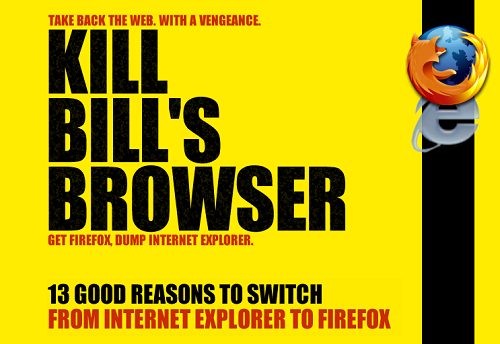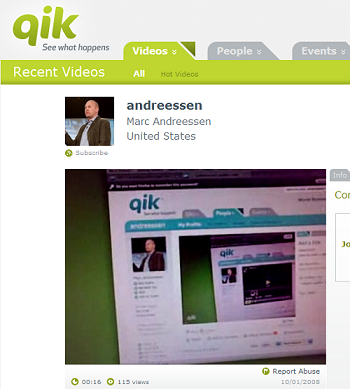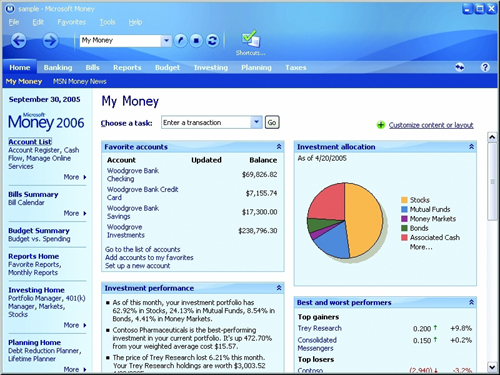Microsoft has abandoned the fundamental principles that made it the most successful software company of the last decade and ensured its software would be the most widely used everywhere. But in just three years, since 2006, startups and Apple have set a new course for technology and how societies use it.
For Microsoft, this change is scarier than movie “Quarantine.” Without a course correction, Microsoft in the 2010s will be very much like IBM was in the 1990s. That’s no place Microsoft should want to be.
I originally wrote a single post, but felt compelled to break it in two, because of the more than 2,000-word length. The first part focused on Microsoft’s past, while this one addresses the present and future. If you want to link to either, rather than both, I strongly encourage it to be this post, part two.
A Deep Fog Settles Over Microsoft From the Cloud
As I explained in part one, Microsoft rose to dominance for many reasons, with one of the most important being control over key technology standards and file formats. But in a surprisingly short span of time, Microsoft has lost control of standards and formats. The company has reached a critical juncture that executives seem unable to comprehend.
Part of Microsoft’s problem is historical. Executives spend too much time focused on competitors. That’s how the Internet crept up on the company in the early 1990s; cofounder Bill Gates and most key managers were obsessed with AOL and CompuServe. They were looking the wrong way.
Microsoft’s Google obsession has made the company blind to its rapidly eroding control over technology standards and the importance of the next-generation computing platform—the mobile handset. While Microsoft frittered away corporate energies chasing Google, startups and Apple released cloud and mobile computing products that are outside the software giant’s control.

These new products and services are transforming society, and rapidly shifting computing relevance from the standards and vertical applications stack (Office-Windows-Windows Server) controlled by Microsoft. The new Internet threat to Microsoft is at least as great today as the one in 1995.
There is no single one mistake made by Microsoft, but a series of cascading failures. The list is simply too long for this already overlong, two-part analysis. Some influences, such as the March 2004 adverse antitrust ruling from the European Union were largely outside of Microsoft’s control. Others, like the release of Firefox, showed how much Microsoft’s standards approach hurt the usability of products (Internet Explorer). Then there are terrible missteps of opportunity, such as Microsoft skipping a chance to buy YouTube; Google got it. I would be remiss to ignore incompetent product management (Windows Mobile and Windows Vista).
Look around you at the startups bringing societal changing products to market—and I contend the cultural impact is at least as dramatic as brought by the PC. For example, most social media startups, whose products and services are taken for granted today, started in the last three years. Facebook, Twitter and YouTube opened to the public in 2006. Most other popular or growing popular social media tools launched within the last three years: Disqus, FriendFeed, tumbr, Twine, Qik and USTREAM, among many others.
There is a new applications stack extending from the mobile device (and for now the PC, too) to the cloud. Facebook claims over 200 million active users, up from about 150 million six months ago. US Facebook users spent 13.9 billion minutes on the site in April, up 700 percent year over year, according to Nielsen Online. Last month, Twitter had 18.2 million unique visitors, for 1,488 percent year-over-year growth, according to Nielsen Online. In May, 95,357 unique viewers watched more than 6 million video streams at YouTube, according to Nielsen Online. Second-ranked Hulu: 382,322.

I know, people have been babbling about cloud computing for years. Big deal, who cares? The difference is that the Wayback Machine stops three years ago. That’s about as far back as you need go to identify popular applications and services that today are hot or getting warm fast. The majority are less than 18-24 months old, and a surprising number came to be last year.
Something else happened since 2006. Microsoft released the poorly received Windows Vista. Most PC users ended up staying with aging Windows XP, which needed to get new features from somewhere. Startups delivered them from the cloud. Meanwhile, Apple marketing and Vista malaise helped boost Mac sales, further empowering cloud computing and social media startups.
Then there is iPhone, which Apple released in June 2007. The third-generation model went on sale last week. Apple is rapidly turning iPhone and the App Store into a mobile computing platform—outside of Microsoft’s control. Same can be said of the social media startups. Sure they may use proprietary technologies, just like Microsoft, but the services can be consumed in a Web browser, and the release of APIs makes them extensible to other products or services. No Microsoft technology required.
Internet Explorer should be the gateway to these cloud services, but its usage share is declining. Month to date, Internet Explorer usage share is 65.5 percent, down from 79.12 percent for all of June 2007, according to Net Applications. Stiffer competition is one reason. For example, within the last three years, Apple and Google released Windows browsers, Safari and Chrome, respectively. Are you starting to see the pattern here? Three years.
Microsoft browser competitors are talking standards, too, but about how their products fully conform to adopted or emerging Web standards, like HTML 5. Now there are good Web browsers on mobile handsets. Data connected cell phones—and more recently smartphones—are bringing these cloud applications to people wherever they are. No PC required. Sign of the times: Yesterday, HP introduced the Photosmart Premium with TouchSmart Web, which requires no PC.
Head In the Sand Is Sure Way for a Kick In the Butt
What’s Microsoft response? Well, it’s not good—or good enough. There’s still the Google obsession, with Microsoft CEO Steve Ballmer last week saying the company was ready to spend $5.5 billion to $11 billion on search over five years.
Microsoft also is hunkering down for hard times. The global recession has pretty much shot all to hell fiscal 2009, which ends a week from today. Microsoft has had two rounds of layoffs and has curbed most incubation projects (run by guerrilla groups acting more like internal startups).

In the consumer marketplace, where social media and cloud computing products and services rapidly gain attention and adoption, Microsoft’s strategy is to pull back in a tough economy. Since 2006—again, what is it about that year—Microsoft has cut most of its major consumer desktop applications, shifting some capabilities to Windows Live services.
Microsoft is lost in the fog—eh, cloud—and turned around by global recession. In October 2007, over at Microsoft Watch, I blogged about Microsoft’s state of reinvention. Microsoft is now in state of crisis, as it grapples with the econolypse.
Recent cutbacks and internal refocusing point to Microsoft making its core business market the top investment priority. It’s a shortsighted strategy that will lead to long-term problems. The products, services and standards that will eventually take hold in the business market are winning over consumers now. Microsoft doesn’t control the standards or file formats behind them.
Among businesses, Microsoft controls an application stack that no competitor has shaken, let alone topple. Microsoft’s control of technologies, standards and formats gives it a stronghold on enterprise computing. Two-fold problem:
- Microsoft has abandoned most consumer products and focused its cloud strategy (e.g., Azure and Online Services) on businesses.
- Microsoft seeks to preserve its existing applications stack, while failing to engage the newer one around the mobile device and cloud.
Stated differently, Microsoft is too focused on seeking to preserve existing revenue streams when creating newer ones should be the priority. Microsoft’s self-preservation approach compels its developers to bind new technologies to Office or Windows, when they should be set free to embrace standards and help establish others.
Microsoft’s Interoperability Principles contribute to its weakened support of standards it controls. The company is all high and mighty about supporting adopted or open standards, but there are problems:
- Some standards are still bound to Microsoft’s application stack, which deters some developers.
- Where Microsoft is truly open, it has few products, if any, to compete with cloud startups.
Perhaps Microsoft could, or would, be more adaptable if not for the econolypse, which has compelled executives to push harder the aforementioned preserve-the-application-stack strategy. IBM followed a similar path in the 1980s, seeking to preserve its application stack around the mainframe. While Big Blue released a PC, the company made protecting its legacy business priority. IBM and its mainframe business didn’t go away, but their relevance diminished before a new applications stack. Microsoft faces similar challenge before the new applications stack. That path will make Microsoft the IBM of 2010s, unless there is a dramatic course correction; if’s not already too late.
Google isn’t the enemy Microsoft needs to worry about now. It’s the mobile-to-cloud application stack that Apple and various cloud and social media startups are advancing. If iPhone/App Store succeeds, Apple will control the standards that define the next-generation computing platform—around mobile devices. Other parties, Google among them, have vested interest in preserving the early Web 3.0 status quo: Open standards or others with published APIs that Microsoft doesn’t control.
As an end user I welcome the standards changes that have helped some really exciting startups bring life changing and society transforming technologies to market. The econolypse may have slowed the number of new startup investments, but not the pace of innovation around what I call the Internet democracy. However, as an adviser, I must warn Microsoft away from a course that will lead the once scrappy startup to becoming what it replaced: IBM.
Photo Credit: Walt Stoneburner
